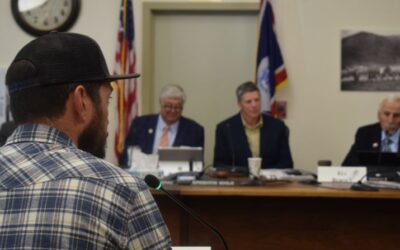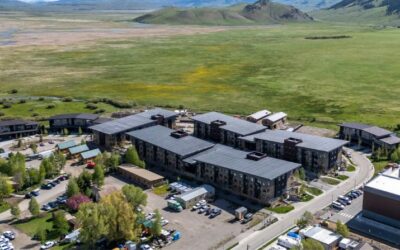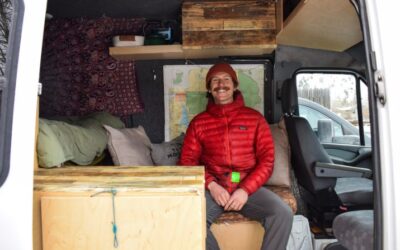The demand for affordable housing in Wyoming is ballooning.
That’s true of communities across the state, including Cheyenne, where there’s expected to be an influx of people moving in to work at software facilities owned by Microsoft and the Francis E. Warren Air Force base.
In light of that fact, state agencies, nonprofits and an interim legislative committee are scrambling to find creative ways of increasing Wyoming’s housing supply.
Here’s one datapoint to remember: 3,100.
That’s roughly the number of families waiting on a statewide list for affordable housing vouchers.
The waitlist has roughly tripled in size in the last three years.
The Cheyenne Housing Authority distributes the vouchers to subsidize rent for tenants who have a private landlord.
“Typically, the wait is a year or more for any voucher that’s issued,” said Greg Hancock, the housing authority’s executive director. “There’s a tremendous amount of time that’s put in to qualify each household prior to the time that they receive a voucher.”
Demand is outpacing supply. Until a solution – or, more likely, a combination of solutions – is found, Wyomingites will either continue to wait, leave the state, or get lucky and secure housing. Or, they’ll lose access to shelter altogether.
Hancock points to a deficit of housing units and cooperative landlords as two reasons for the waitlist.
As it continues to grow, the lack of low-income housing has led some community groups to take matters into their own hands.
COMEA Shelter is a homeless residence in Cheyenne.
“Somebody stays in our program for two years. They’ve been sober, they’ve had the same job, they’re ready to go, they’re ready to move out – [but] there’s nowhere for them to go,” said Robin Bocanegra, COMEA’s executive director.
Bocanegra and her team are trying to solve that problem themselves. About a year ago, she said the shelter was given a dilapidated motel by the city of Cheyenne that sits right next door to it.
The city purchased it using COVID-era American Rescue Plan Act (ARPA) funds with the intention that the shelter would transform it into individual affordable housing units.
“There was a lot of drug traffic. There was actually human trafficking. A lot of criminal activity [was] going on over there,” Bocanegra said. “I mean, it was very undesirable. Lots of police calls.”
So far, three units have been refurbished and are currently occupied. Nineteen additional units are planned for renovation in the coming year.
The brown and beige motel forms a horseshoe around an asphalt lot.
Dave Wells is one of the occupants of the “Stages,” program, named after the motel it replaced, The Stage Coach. He has a bushy white beard and a baseball cap with the American flag.
As Wells put it, he’s a graduate of the COMEA process, starting off as a resident of the main homeless shelter nearby.
He quit drinking and found a job while at COMEA, later moving into his own apartment in Cheyenne.
“COVID hit, I started going blind,” said Wells. “And it was pretty terrible. But I was paying my bills and making it and everything.”
Then, a new company bought the apartment complex he’d lived in for the last 10 years.
“New management came in and took over and more than doubled my rent,” Wells said. “And that was, like, one and a half times my disability check.”
For a while, it seemed the only option for him would be to live on the streets once again.
“Oh, my heart fell out of me,” Wells said. “I just – I felt lost. What am I gonna do with all this stuff? What am I gonna do? Where am I gonna go? How am I gonna live?”
He got lucky and was offered an apartment at Stages. He said he feels at home there.
And he just got a new neighbor: Tom Sullivan.
Sullivan said he became disabled around six years ago.
“And then before COVID I started traveling around,” said Sullivan. “I went to all the western states. I was in Florida. I was trying to find senior housing. I was approved for senior housing. But I couldn’t find one.”
He took Greyhound buses from state to state looking for a place that would take him in, eventually landing in the COMEA Shelter.
When he applied to be an upstairs resident of the main shelter, Sullivan said the staff asked him: “‘If you’re denied your application to be part of the second stage of the program, what would you do?’ And my answer was, ‘Get back on the bus.’”
But he made it through. Now, he’s living in the Stages program with his kitten, Frisky.
“He’s on the radio, meowing at people,” Sullivan said. “Interviewing!”
While local shelters like COMEA are taking solutions into their own hands, an interim committee of the Wyoming Legislature is thinking of their own.
“A specific solution that was proposed in our committee is this idea of tax incremental financing,” said Sen. Cale Case (R-Lander), chairman of the Joint Corporations Committee.
That idea he mentioned, also called “TIF,” takes blighted or undeveloped areas and provides money to the developer by loaning based on the likely taxes to come to the state in the future.
The hope would be to draft a bill to allow those funds to subsidize affordable housing as well.
But the potential committee sponsorship of a TIF bill in the next session comes with its own complexities.
“In our (state) constitution, we’re not supposed to loan our credit to private entities,” Case said. “But that’s been circumvented in times when there’s a public purpose.”
The argument, Case said, is that using tax incentives to increase affordable housing is in the public’s interest.
As lawmakers continue working on potential solutions and local groups do their part, it’s clear that for now, there won’t be an easy fix.
This reporting was made possible by a grant from the Corporation For Public Broadcasting, supporting state government coverage in the state. Wyoming Public Media and Jackson Hole Community Radio are partnering to cover state issues both on air and online.






